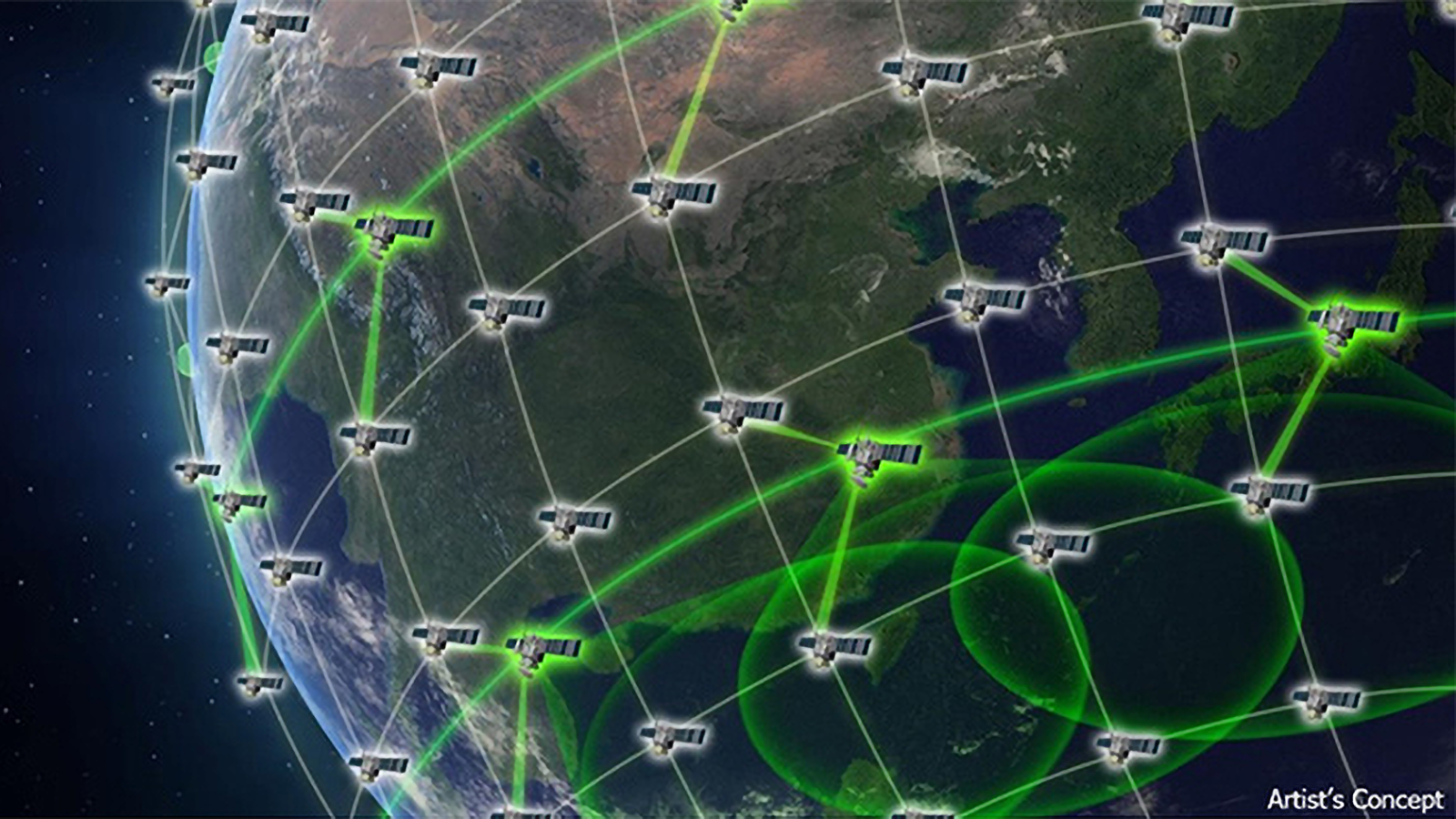
DARPA’s Blackjack satellite program (DARPA illustration)
WASHINGTON — The Pentagon’s far-future research organization’s plans to to demonstrate cross-satellite laser links under its Blackjack program has been delayed, in part due the lack of an available launch window, according to industry and government officials.
“We are in the process of test integration at this point, awaiting delivery of government-furnished equipment. And because we’re beholden to DARPA [the Defense Advanced Research Projects Agency] for rideshare on a SpaceX Falcon 9, I think the last I heard was that they’ve pushed us to January of next year for launch,” Rich Pang, Telesat Government Solution’s vice president for corporate development, said Tuesday during a panel at the Satellite 2023 show.
Telesat Government Solutions is the US subsidiary of telecoms behemoth Telesat, which is headquartered in Canada, and is providing a pair of satellites for the test.
A DARPA official couldn’t confirm an exact launch date for the Telesat birds, but explained in an email today that the agency is awaiting a launch slot as well as the availability of an integration facility.
Telesat in October 2021 won a $18.3 million Blackjack contract to build the two satellites, with options to build a total of 20, using a bus provided by Airbus. At the time, DARPA was predicting first launch in 2022.
The goal of Blackjack effort is to test optical inter-satellite links (OISLs), each developed by a different vendor, between satellites in low Earth orbit (LEO). OSILs are critical to the Space Development Agency’s planned Transport Layer, a mesh network of hundreds of data relay satellites in LEO. The Transport Layer, in turn, will serve as a foundation for the Defense Department’s high-priority Joint All Domain Command and Control network.
“And one of the main reasons for their satellites is to test the interoperability of different manufacturers of optical satellite things along with [the government furnished payloads] that will fly,” Pang explained. “And then after those missions and objectives are completed, we will use it to also demonstrate and test our terminals for our Lightspeed constellation.”
Lightspeed is Telesat’s own planned network of 188 LEO telecommunications satellites. “Telesat Lightspeed will fully support both electronically steered antennas (ESAs) and mechanically steered antennas for commercial, government, and defence markets including requirements for land, land-mobile, aeronautical, maritime, and other platforms,” the firm’s website explains.






















